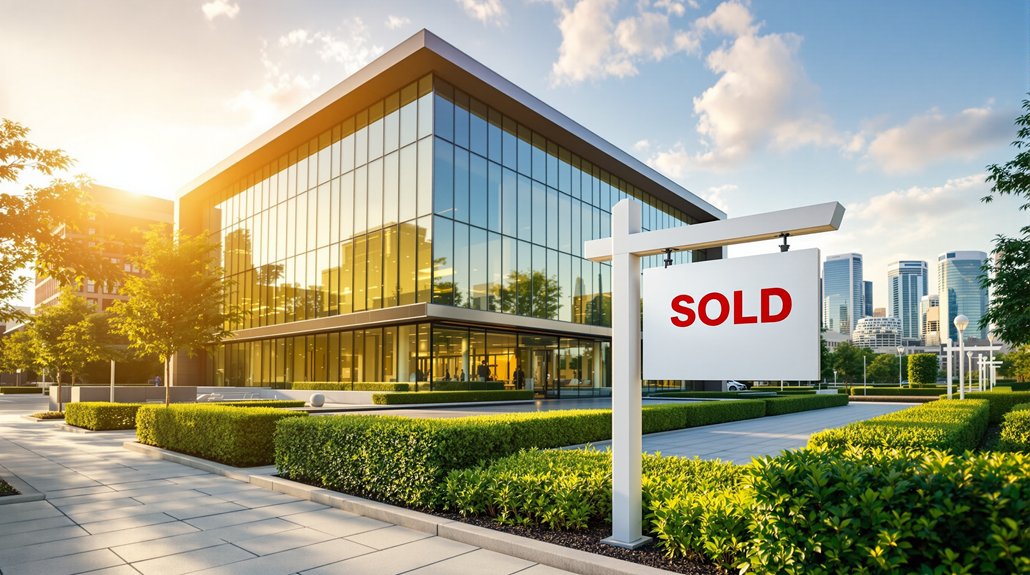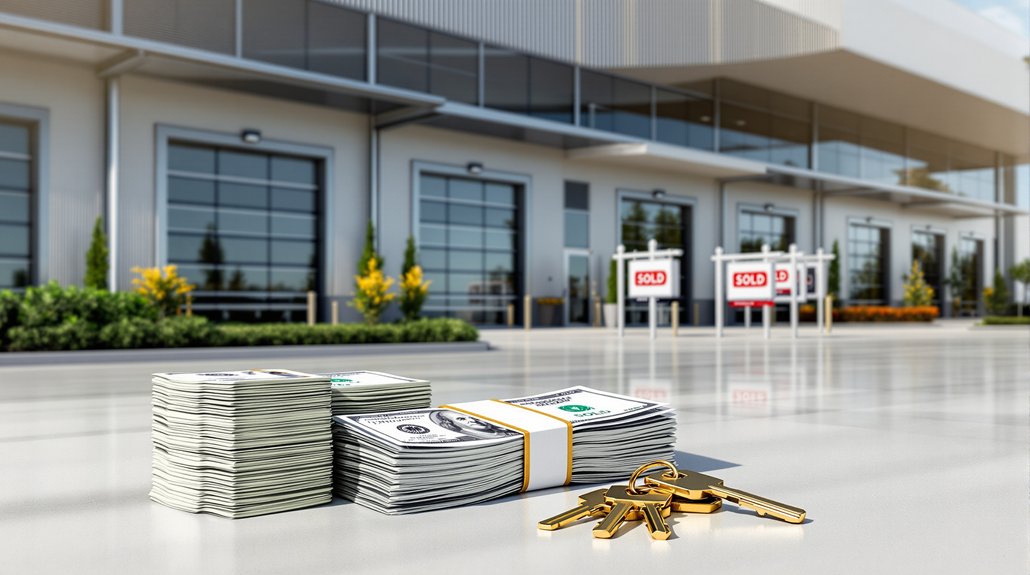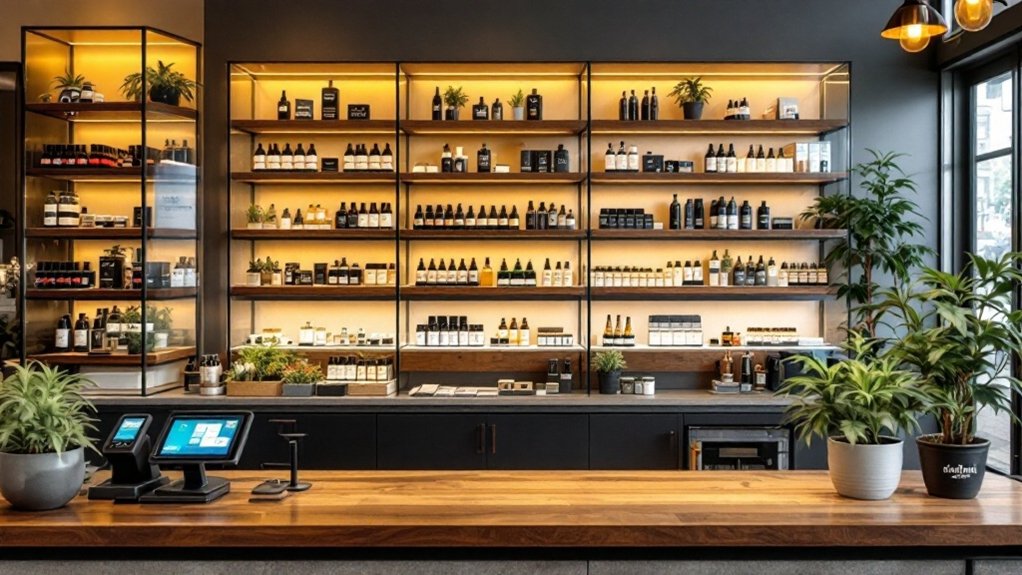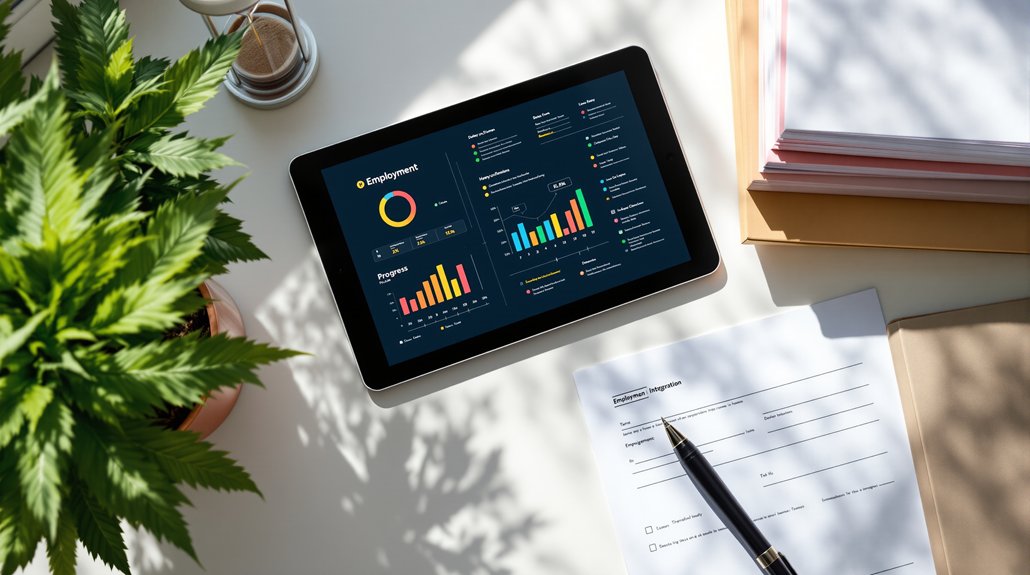Cannabis property owners face unique challenges when planning their exit strategies, as traditional real estate valuation methods often fall short in this rapidly evolving market. The industry’s regulatory complexity, combined with shifting state laws and institutional investment patterns, creates both opportunities and pitfalls for operators seeking maximum returns. Smart property owners recognize that timing, positioning, and preparation can mean the difference between a profitable exit and a costly mistake, particularly as market dynamics continue to shift beneath their feet.
Timing Your Exit With Regulatory Milestones and Market Cycles

Within the complex landscape of cannabis real estate, successful property owners recognize that timing their exit requires careful alignment with both regulatory developments and broader market forces.
Federal rescheduling events and major regulatory announcements consistently trigger market surges for cannabis assets, with transaction volumes and bid depth rising following favorable news. Event-driven exit strategies that link listings to governance calendars greatly outperform arbitrary calendar-based approaches in volatile regulatory climates.
Market cycles also play an essential role in exit timing. Sustained rallies in cannabis stock prices typically precede increased private-market appetite for real estate acquisitions, pushing up property valuations. Public-market direction leads changes in private-market interest by weeks, while closed-deal volume follows with a lag.
Conversely, sharp drawdowns in stock indices depress acquisition demand and widen bid-ask spreads. Smart operators monitor both regulatory calendars and market sentiment to identify ideal liquidity windows during bull cycles. Properties in recreational cannabis states command premium valuations, with homes appreciating by $60,327 more over 15-year periods compared to non-legal states.
Physical Asset Optimization for Premium Valuations
Premium cannabis property valuations depend heavily on physical asset enhancement, with well-designed facilities commanding considerably higher sale prices than their poorly configured counterparts.
Efficient space utilization maximizes productivity per square foot, directly translating to increased profitability and higher valuations. Logical workflow layouts minimize labor waste while ensuring smooth plant movement throughout cultivation stages, creating operational efficiency that buyers value highly.
Advanced HVAC systems maintaining ideal temperature and humidity levels demonstrate sophisticated environmental controls essential for consistent yields. Properties with 100% air recirculation systems particularly appeal to buyers seeking maximum contamination risk mitigation and operational reliability.
Modular designs allow cost-effective expansion without disrupting operations, appealing to growth-oriented buyers. Automated lighting and irrigation systems reduce operational costs while improving plant consistency. Customizable LED lighting systems that reduce energy consumption by up to 90% are especially attractive to environmentally conscious investors. Properties with adaptable systems for future technological integration demonstrate forward-thinking design that attracts premium valuations.
Compliance-conscious infrastructure, including proper security systems and waste handling capabilities, positions properties for licensing changes and attracts premium buyers seeking regulatory certainty.
Strategic Positioning in High-Demand Markets and Jurisdictions

Location determines success in cannabis real estate more than any other single factor, as properties situated in high-demand markets consistently command premium valuations and attract sophisticated investors.
States with recreational cannabis legalization experienced average home value increases of $60,327 compared to non-legal states from 2009 to 2024. Nine of the top ten home value growth states have legalized cannabis in some form, demonstrating clear market correlation.
Eight states are projected to surpass $1 billion in annual cannabis retail sales during 2023, creating intense demand for compliant commercial properties.
Michigan leads with $23.42 average monthly per capita spending, while Missouri recently achieved billion-dollar market status. Canada and Uruguay have established regulated markets that provide valuable insights into long-term property valuation trends in fully legalized environments.
Properties in these high-performing jurisdictions benefit from increased warehouse, storefront, and cultivation facility demand, with specialized cannabis-use assets attracting premium investment capital exceeding $10 billion nationally. Nearly half of commercial Realtors in legalized states reported increased demand for commercial spaces, indicating sustained market expansion.
Due Diligence Preparation and Documentation Excellence
Cannabis property transactions demand meticulous documentation preparation that far exceeds traditional real estate standards, as buyers and investors require thorough verification of regulatory compliance, operational legitimacy, and financial transparency before committing capital.
Sellers must compile extensive legal inventories including licenses, permits, zoning documentation, and regulatory correspondence. Property assessments require detailed site plans, environmental reports, building condition evaluations, and equipment inventories that demonstrate operational readiness.
Financial documentation encompasses debt obligations, existing contracts, insurance coverage, and operating statements that reveal true property performance.
Cannabis-specific operational records must include product handling procedures, security protocols, inventory control systems, and compliance violation histories.
Smart operators establish organized data rooms containing indexed documentation, market research, and competitive analyses. This preparation greatly reduces transaction timelines while maximizing buyer confidence and final sale valuations.
Targeting Institutional Buyers and Alternative Exit Structures
While traditional real estate buyers often shy away from cannabis properties due to regulatory uncertainties, institutional investors have emerged as the dominant force driving liquidity in the cannabis real estate market through sophisticated transaction structures that maximize returns while managing risk exposure.
Sale-leaseback transactions represent the preferred structure, with over $50 million priced in Q3 2023 alone, enabling property owners to access capital while providing investors stable income streams.
Cannabis-focused REITs continue serving as primary buyers, particularly as commercial banks remain hesitant due to federal illegality.
Cap rates have widened 100-150 basis points since late 2021, though primary market properties with established operators command more competitive terms.
Alternative structures including ground leases, joint ventures, and partial interest sales offer additional pathways for maximizing value in volatile markets.
Establishing operational capital reserves of $100,000-$250,000 is essential for maintaining property value and addressing unforeseen expenses that might otherwise diminish selling potential.
Always consult with legal counsel and real estate experts for guidance on your specific situation and jurisdiction. For more information, check out our Guide to Cannabis Real Estate.









